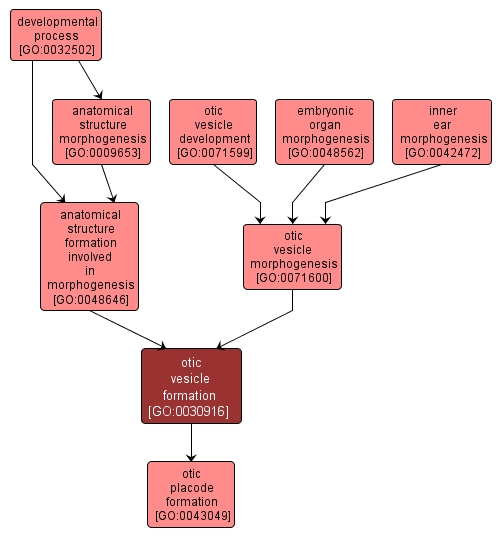GO TERM SUMMARY
|
| Name: |
otic vesicle formation |
| Acc: |
GO:0030916 |
| Aspect: |
Biological Process |
| Desc: |
The process resulting in the transition of the otic placode into the otic vesicle, a transient embryonic structure formed during development of the vertebrate inner ear. |
Synonyms:
- otocyst biosynthesis
- otocyst formation
|
|

|
INTERACTIVE GO GRAPH
|














